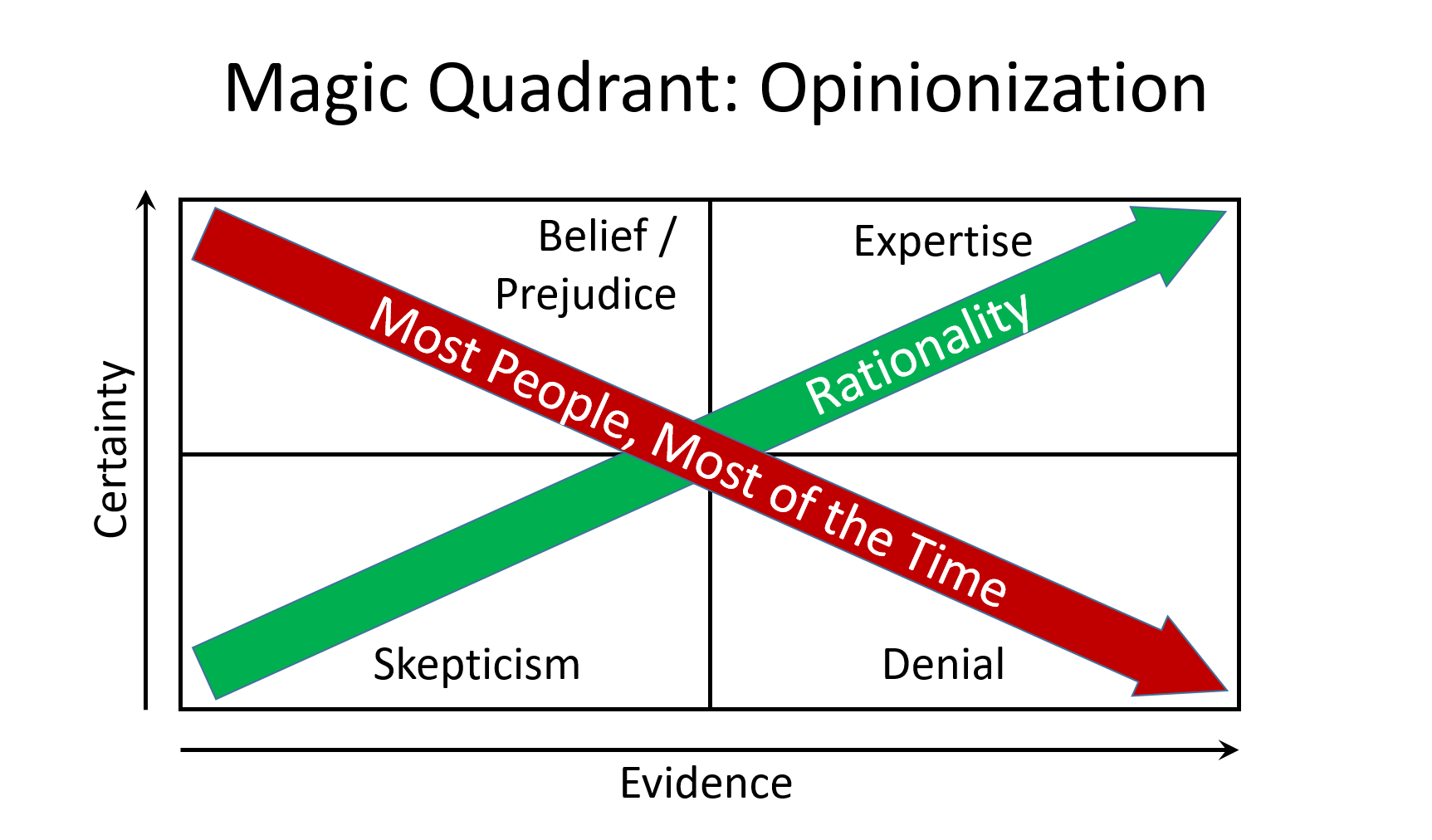Once upon a time I thought leading well mattered more than managing well. Then I wrote a book about how to lead well.
Funny thing about writing a book. I think I know exactly what I think about a subject. Then I start to explain it and discover that exactly what I think about the subject doesn’t hold up very well.
As is the case with geometrical proofs, even the act of writing definitions can be enough to trigger a complete change in perspective.
My definitions of leadership and management did that: Leadership is the art of getting others to follow. Management is getting work out the door through the efforts of others.
Imagine you’re making a business case to your company’s CEO. You say, “We have a choice. We can either get more of our employees to follow us more enthusiastically, or we can get them to get work out the door more effectively.”
The CEO asks, “What’s the return on investment for getting employees to follow us more enthusiastically?” You reply with various statistics about engaged workforces and such. “Okay,” the CEO continues. “What’s the ROI for getting work out the door more effectively?”
“Hmmm,” you reply. “If employees get work out the door, say, ten percent more effectively then I guess it would improve our margins by, say, ten percent.”
The CEO’s expression tells you it’s time to stop taking advantage of her open door policy and start getting work out the door more effectively.
It isn’t that leadership doesn’t matter. Leadership is one of the most important skills managers can develop, because if employees follow you where you lead, then you can lead them to the promised land of improved organizational effectiveness. They’ll get there under their own power, too. You won’t have to drag them there kicking and screaming.
Bob’s last word: Leadership consists of eight tasks: (1) Setting direction; (2) delegating; (3) making decisions; (4) staffing; (5) motivating; (6) building and maintaining teams; (7) establishing culture; and (8) communicating.
Improving at these eight skills might not make you a great leader. They might not even make you a good leader.
They’ll definitely make you a better leader.
And while managing is what pays the bills, leading effectively sure makes managing easier.
Bob’s sales pitch: Want to know how to improve at these tasks? Buy the book! Want your managers to improve at these tasks? Buy them the book!
# # #
I’m trying out a new format this week. I don’t know if I like it or not. More important, I don’t know if you like it or not, and won’t know unless you tell me. So send me your thoughts, or share them in a Comment. Thanks!
– Bob

